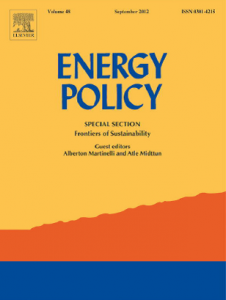 Energy efficiency retrofits are often impeded by high perceived investment risks, long payback periods and a lack of skills. At the municipal level these issues are particularly pronounced as procuring, implementing, and managing retrofits can exceed existing municipal governance capacities. The diffusion of municipal LED street lighting as a replacement for conventional lighting serves as an example. This paper argues that technological (e.g. complexity and maturity), economic (e.g. selling services vs. products and financing costs), institutional (e.g. property situation and contracts) and competency barriers to retrofitting (e.g. lack of measurement capacity and qualified facilitators) translate into transaction costs. We develop a taxonomy of appropriate modes of municipal retrofitting governance based on transaction costs economics. The findings indicate that more market-based solutions, energy performance contracts in particular, can facilitate the procurement of innovative energy efficiency retrofitting solutions and associated investments among municipalities if neutral tenders, open-book accounting, municipal ownership and intermediary organisations allow municipalities to choose appropriate governance structures for particular technologies and retrofits.
Energy efficiency retrofits are often impeded by high perceived investment risks, long payback periods and a lack of skills. At the municipal level these issues are particularly pronounced as procuring, implementing, and managing retrofits can exceed existing municipal governance capacities. The diffusion of municipal LED street lighting as a replacement for conventional lighting serves as an example. This paper argues that technological (e.g. complexity and maturity), economic (e.g. selling services vs. products and financing costs), institutional (e.g. property situation and contracts) and competency barriers to retrofitting (e.g. lack of measurement capacity and qualified facilitators) translate into transaction costs. We develop a taxonomy of appropriate modes of municipal retrofitting governance based on transaction costs economics. The findings indicate that more market-based solutions, energy performance contracts in particular, can facilitate the procurement of innovative energy efficiency retrofitting solutions and associated investments among municipalities if neutral tenders, open-book accounting, municipal ownership and intermediary organisations allow municipalities to choose appropriate governance structures for particular technologies and retrofits.
Tags
barriers to innovation bibliography management cleantech diversity divestment dynamic capabilities educate-it energy performance contracting energy services Entrepreneurship Finance financial sector financing innovation free software human resources innovation innovation intermediaries institutional investors Institutions International investments investor motivation local energy transition low-carbon low-carbon innovation management matching modes of governance policy instruments Post-socialism public policy regulation renewable energy research research communication research tools resilience Social Entrepreneurship social networks stakeholder sustainable energy teaching 2.0 teaching tools transition venture capital

